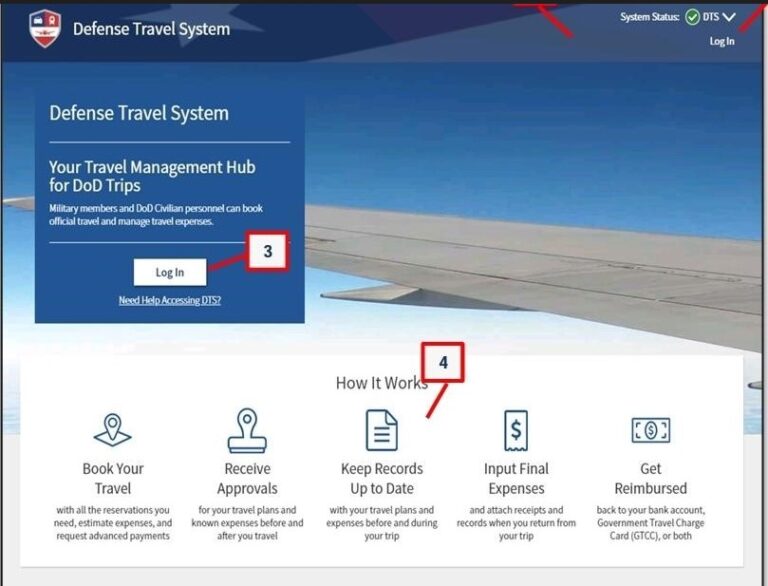Defense Travel Regulation : What it is
Defense Travel Regulation: A Guide to Streamlining Your Travel Process
Are you tired of dealing with outdated and time-consuming travel systems? Look no further than the Defense Travel Regulation (DTR), a comprehensive framework designed to modernize and simplify travel processes for the Department of Defense (DoD). In this article, we will delve into the benefits of the DTR, explore its key features, and provide answers to frequently asked questions.
Why You Should Choose Defense Travel Regulation

The Defense Travel Regulation is the answer to the frustrations and inefficiencies associated with manual travel documentation. It offers a user-friendly interface that enables travelers and travel administrators to effortlessly manage their travel requirements. By implementing the DTR, the DoD aims to enhance its operational effectiveness and ensure compliance with the evolving guidelines and regulations.
The Key Features of Defense Travel Regulation

Let's take a closer look at some of the key features that make the Defense Travel Regulation stand out:
1. Streamlined Travel Authorization

With the DTR, travelers can easily submit travel authorization requests online. The system guides users through the process, ensuring all necessary information is provided and reducing the chances of errors or omissions. By automating this process, the DTR significantly reduces the time and effort required to gain authorization for travel.
2. Enhanced Expense Reporting

Gone are the days of manual expense reporting. The DTR simplifies this process by providing a digital platform where travelers can record their expenses with ease. The system also integrates with financial systems, ensuring accurate and efficient reimbursement for travel-related expenses.
3. Real-Time Travel Updates

Keeping track of travel itineraries and changes can be a daunting task. The DTR offers a centralized platform where travelers can access real-time updates regarding their flights, accommodations, and other travel-related arrangements. This feature ensures that travelers are always informed and can adapt to any changes seamlessly.
FAQs About Defense Travel Regulation
Q: How can I access the Defense Travel Regulation system?
A: The DTR system is accessible through a secure web portal. Simply visit the DoD's official website and click on the DTR link to get started. You will need to create an account and log in to access the various features and functionalities.
Q: Is the Defense Travel Regulation available for all Department of Defense personnel?
A: Yes, the DTR is available to all DoD personnel, including military personnel, civilian employees, and contractors. The system caters to the unique travel requirements of each group, ensuring a seamless experience for all users.
Q: Can I submit travel authorization requests on behalf of someone else?
A: Yes, the DTR allows travel administrators to submit travel authorization requests on behalf of travelers. This feature is particularly beneficial for administrative personnel who handle travel arrangements for multiple individuals within their organization.
In Conclusion
The Defense Travel Regulation revolutionizes the way the Department of Defense handles travel. By streamlining the travel process, enhancing expense reporting, and providing real-time updates, the DTR empowers travelers and travel administrators with an efficient and effective platform. Embrace the power of the DTR to simplify your travel experiences and focus on what truly matters – fulfilling your mission.
Disclaimer: The information provided in this article is based on publicly available data and is not endorsed or affiliated with any government or AI organization.
Federal Travel Regulation (FTR) | GSA
 Image Source : www.gsa.gov
Image Source : www.gsa.gov travel regulation federal ftr gsa regulations gov
Joint Travel Regulations
 Image Source : www.defensetravel.dod.mil
Image Source : www.defensetravel.dod.mil jtr dod diem office allowance transportation administrative developing maintaining administering
Joint Travel Regulations
 Image Source : www.defensetravel.dod.mil
Image Source : www.defensetravel.dod.mil jtr dod allowance transportation diem administering developing administrative maintaining
Amazon | Joint Federal Travel Regulation (JTR) - Volume 2 (Department
 Image Source : www.amazon.co.jp
Image Source : www.amazon.co.jp Defense Travel Management Office
 Image Source : www.yumpu.com
Image Source : www.yumpu.com Modernizing The Department Of Defense Travel System | United States
 Image Source : www.usds.gov
Image Source : www.usds.gov travel defense system digital service card usds gov
Regulations | GSA
 Image Source : www.gsa.gov
Image Source : www.gsa.gov regulations regulation gsa travel federal
How To Use Dts Army - Army Military
 Image Source : armymilitary.net
Image Source : armymilitary.net Modernizing the department of defense travel system. Federal travel regulation (ftr). Jtr dod allowance transportation diem administering developing administrative maintaining. Joint travel regulations. Travel regulation federal ftr gsa regulations gov